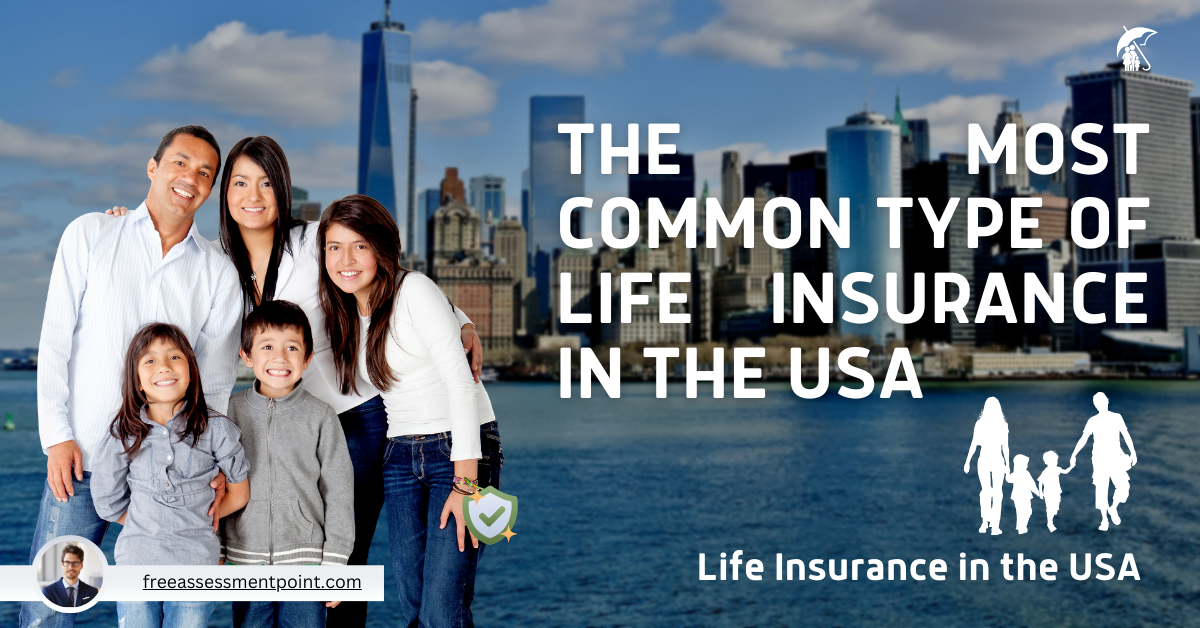The Most Common Type of Life Insurance in the USA: In the intricate tapestry of financial planning in the United States, life insurance emerges as a crucial thread, weaving security and protection for individuals and their families. Within the diverse array of life insurance options, one type stands out as the most prevalent—the ever-reliable term life insurance. This article seeks to explore the reasons behind its popularity, unraveling the nuances that make term life insurance the cornerstone of many American households.
The Dominance of Term Life Insurance:
Term life insurance reigns supreme as the most common type of life insurance in the USA. Its popularity is rooted in its simplicity, affordability, and adaptability to the dynamic life stages of policyholders.
Simplicity in Structure:
Fixed Duration: The defining feature of term life insurance is its fixed term, typically ranging from 10 to 30 years. This straightforward structure aligns with the specific needs of individuals during distinct periods of their lives.
Death Benefit: In the event of the insured’s death during the term, beneficiaries receive a tax-free death benefit. This lump sum provides financial support for outstanding debts, living expenses, and other financial obligations.
Affordability as a Key Driver:
Lower Premiums: Term life insurance is renowned for its affordability. Monthly premiums are generally lower than those associated with permanent life insurance, making it accessible to a broader demographic.
Budget-Friendly Protection: The cost-effectiveness of term life insurance allows individuals to secure substantial coverage without stretching their budgets, catering to the financial goals of many families across the nation.
Flexibility for Changing Needs:
Tailored Coverage: The fixed term of term life insurance enables policyholders to align coverage with specific financial responsibilities. This flexibility is particularly valuable for addressing needs such as paying off a mortgage or ensuring financial stability until dependents achieve financial independence.
Renewability and Convertibility: Some term policies offer options for renewal at the end of the term or conversion into permanent policies. These features accommodate the evolving financial landscape and changing needs of policyholders.
Ease of Understanding:
No Cash Value Component: Term life insurance is devoid of the cash value accumulation found in permanent life insurance. This absence of investment features contributes to the simplicity of term life policies, allowing policyholders to focus on the core benefit—financial protection.
No Complex Investment Decisions: The straightforward nature of term life insurance eliminates the need for policyholders to navigate complex investment decisions, making it an attractive option for those seeking a hassle-free insurance solution.
Wide Applicability Across Demographics:
Young Families: Term life insurance caters to the needs of young families, providing essential coverage during critical stages of life when financial responsibilities are high.
Individuals on a Budget: The affordability of term life insurance makes it an ideal choice for individuals with budget constraints, allowing them to prioritize financial protection without compromising on quality coverage.
Conclusion:
Term life insurance, with its simplicity, affordability, and adaptability, emerges as the most common type of life insurance in the USA. As a steadfast protector of dreams and financial well-being, term life insurance resonates with a diverse range of individuals and families across the nation. By understanding the fundamental reasons behind its prevalence, individuals can confidently navigate the world of life insurance, securing a foundation of protection that aligns with their unique needs and aspirations.
